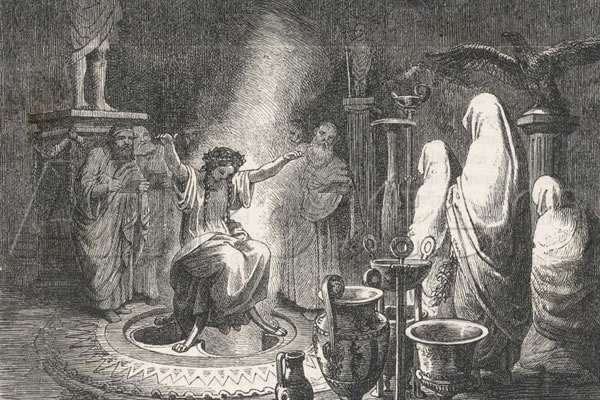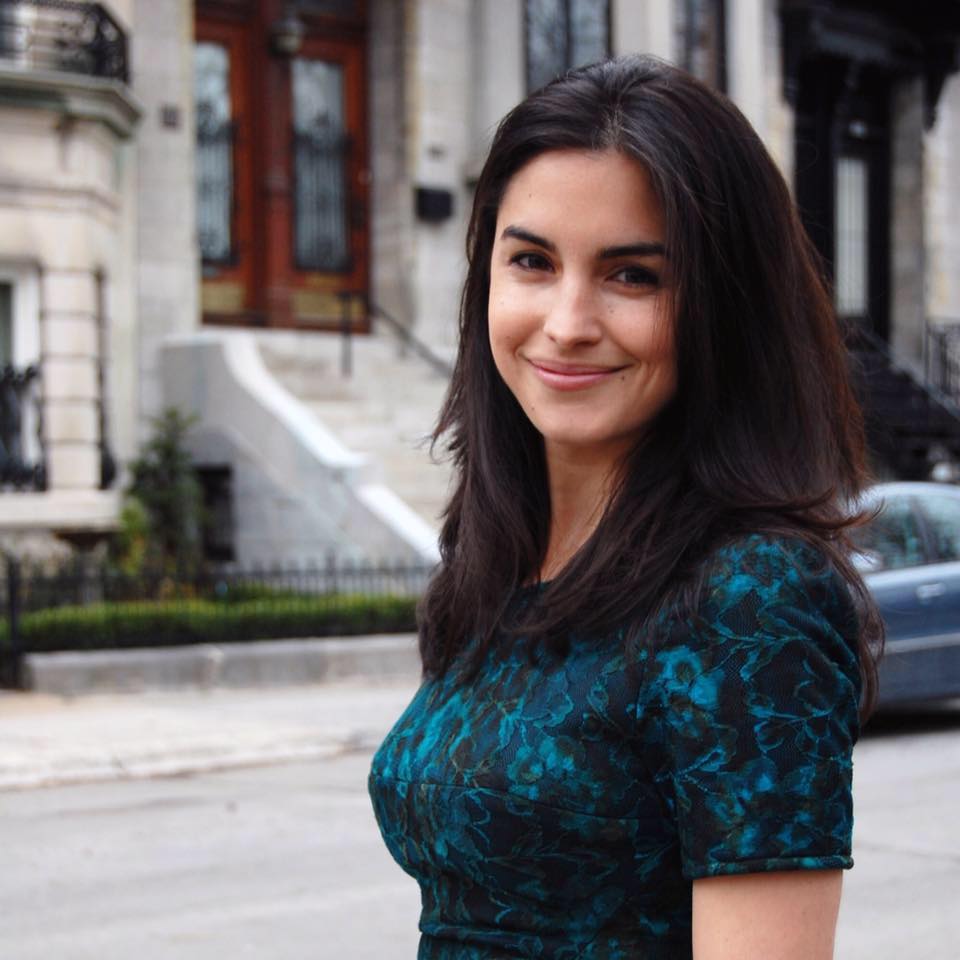
Ever since Apollo’s oracle at Delphi urged visitors to “Know Thyself,” human beings have been obsessed by the search for themselves. Armed with sufficient self-knowledge, we could finally figure out how to live our best lives. What kind of work will allow me to fulfill my potential? What kind of person should I marry? How has my life gone a bit off track, and how can I put it right?
The answer to all these questions and more can be found in the “Myers-Briggs Type Indicator”—or so the test would have you believe. Taken by two million people a year, and administered by institutions from Fortune 500 companies to the Central Intelligence Agency, the Myers-Briggs assessment is the main subject of Merve Emre’s The Personality Brokers: The Strange History of Myers-Briggs and the Birth of Personality Testing. The search for self-knowledge may be, in Emre’s words, as “old as the letters carved into the Temple of Apollo at Delphi,” but the ways we answer it keep changing. Emre takes a fun and wide-ranging look at the kinds of self-knowledge people want—and, indirectly, the kinds it’s more comfortable to avoid.

(Photo: Penguin Random House)
For those who have not had the pleasure of making its acquaintance, the Myers-Briggs Type Indicator is a long questionnaire, which poses questions such as: “Do you prefer (a) small parties, or (b) large gatherings?” and: “When the truth would not be polite, are you more likely to tell (a) the polite lie, or (b) the impolite truth?” Based on your responses to everyday situations, the indicator gradually determines whether you are more attuned to the outside world (Extraverted), or to the world within (Introverted); more prone to gather facts and figures (Sensing), or to imagine new possibilities (Intuition); logical and analytical (Thinking) or sympathetic (Feeling); likely to stick to the plan (Judging) or open to new options (Perceiving). At the end of the survey, the indicator spits out one of 16 possible four-letter acronyms, like ENFP (the “N” is for Intuition). This acronym is your Myers-Briggs “type.”
Or, on a deeper level—according to Myers-Briggs partisans—this acronym is you. During a four-day Myers-Briggs “re-education program,” Emre’s instructor informs the class that type expresses a person’s real, true, “shoes-off self.” It isn’t who you are today, or who you have to be at work, or even who you’ve become thanks to the decisions you’ve made over the course of your life. Rather, your type reveals your innate, unchanging identity. At one point Emre’s instructor encourages her class to chant in unison: “Type never changes! Type never changes!” Throughout the book, Emre puts her background in literary studies to good use in scenes like this one, drawing funny, sharp, and ultimately sympathetic portraits of her characters.
Where Apollo’s Oracle merely told you to know yourself, the Myers-Briggs evaluation offers a concrete chance to find out, once and for all. In Emre’s analysis, the indicator promises “self-mastery through self-knowledge.” Once you’ve met your “shoes-off self,” it’s time to pick a spouse with a complementary type, pursue a career that plays to your strengths, and generally make the most of your potential. This is where Emre locates “the nerve center of type’s appeal: the promise that, within each person, there lived a coherent individual who was master of her own life.”

(Photo: Wikimedia Commons)
At the same time, Myers-Briggs has always had a larger social agenda. The indicator began in the early 20th century as the brainchild of Katharine Briggs and Isabel Myers, a mother-daughter team convinced that “the quest for a better social order … began with the personalities who were—or who ought to have been—at the top of the political and economic hierarchy.” Together they developed the indicator as a way of identifying people’s strengths, so these people could then take their rightful and proper places in society. Katherine conceived of the test in quasi-mystical terms (the types are based on Jungian psychology), but it didn’t really start to catch on until the 1960s, when Isabel convinced institutions—from businesses to schools and churches—that the indicator would “place the worker in the proper niche, keep him happy, and increase production.” (Extroverts work well in groups, introverts need autonomy, and so on.) If each employee were placed in “the job that was divinely right for him,” Emre points out, then his boss could “encourage him to lodge his sense of self ever deeper into his nine-to-five occupation.”
Unsurprisingly, the indicator attracted fierce critics, even before it became popular. At the company originally tasked with marketing the Myers-Briggs, a statistician pointed out that it had no empirical validity or predictive power: The same person could take it on different days and get different results. (Isabel kept a file on this skeptical young statistician, labeled “Larry Stricker, Damn Him.”) Undermining the immutability of type, the mid-century sociologist Erving Goffman argued that the “self” was, in fact, a social performance, tailored to different scenes and situations. And the Marxist critic Theodor Adorno thought that typology, while purporting to reveal individuality, in fact erased the individual by fitting everyone into an existing mold, as unyielding as fate in a Greek drama.

(Photo: Courtesy of Merve Emre)
Emre dutifully notes these objections but, at the same time, she cannot bring herself to dismiss the Myers-Briggs as a scientific embarrassment, or a capitalist plot. As she studied Katherine and Isabel’s work, and spent time with Myers-Briggs true believers, she again and again ran into the undeniable power of the indicator. “Scientific or not,” Emre writes, “the indicator had always managed to spark a sudden and ecstatic perception of self-knowledge.” Perhaps the secret of the Myers-Briggs success is that it could make self-discovery fun, even joyful.
But is self-discovery always such a good time? Rewind, for a moment, all the way to the beginning of this piece: to ancient Greece. The most famous literary appearance of Apollo’s Oracle is in Sophocles’ Oedipus Rex. When Oedipus finally understood what the Oracle had been trying to tell him (i.e. that he had unwittingly murdered his father and been married to his mother for years), it was no fun. It was no fun at all.
Self-knowledge in Greek tragedies is different from the self-knowledge that Myers-Briggs offers. Instead of a general sense of one’s personality, it concerns specific faults, wrongs, and harms, which define your character and the course of your life, for better or, usually, for worse. And unlike the Myers-Briggs, which promises self-improvement, the knowledge gained in a tragedy is precisely that: tragic. It’s what you’re culpable for but can never put right. This makes it different from theories of the socially constructed self too. There’s always the possibility of sloughing off society’s expectations, or even living to see a political revolution, but in tragedies people face the parts of themselves they can’t escape.
Who, given an hour alone, could not come up with a list of irrevocable mistakes, and the personal flaws that led to them? Opportunities missed. Friends and family hurt. Love lost. It’s enough to put anyone off of introspection altogether. Perhaps another secret of the Myers-Briggs’ popularity is that it offers the thrill of self-discovery without the risk of self-exposure.

Pacific Standard’s Ideas section is your destination for idea-driven features, voracious culture coverage, sharp opinion, and enlightening conversation. Help us shape our ongoing coverage by responding to a short reader survey.





